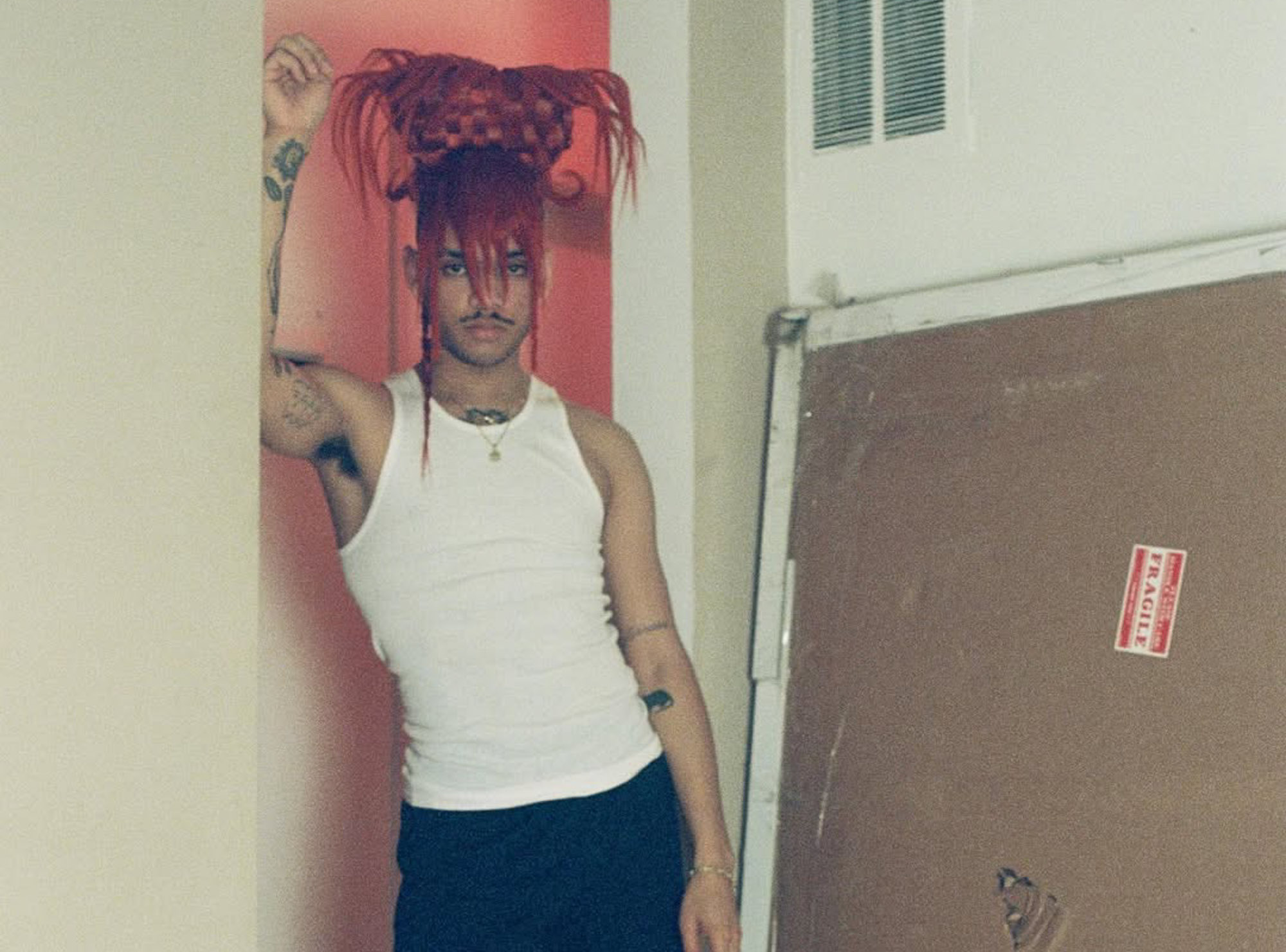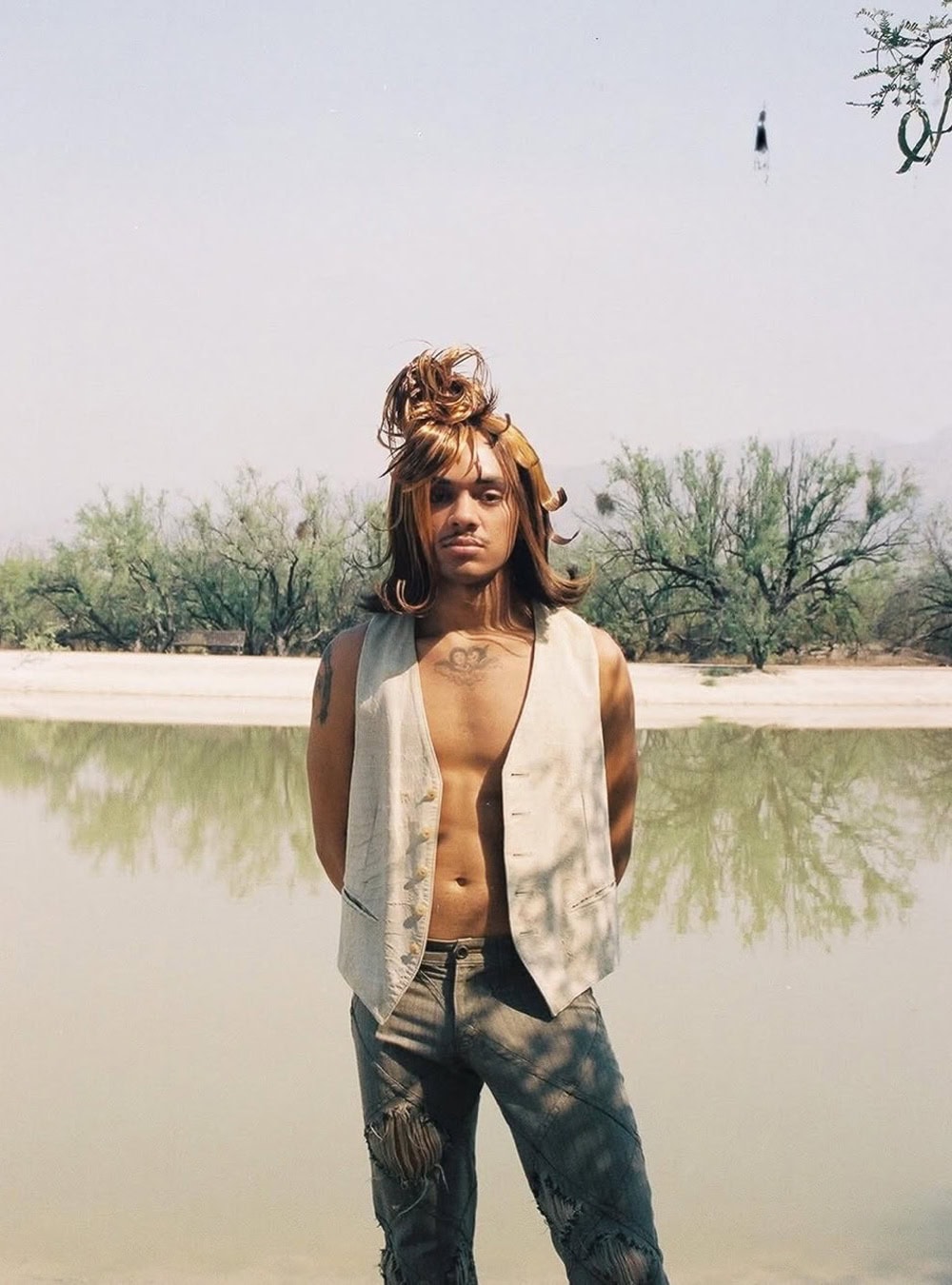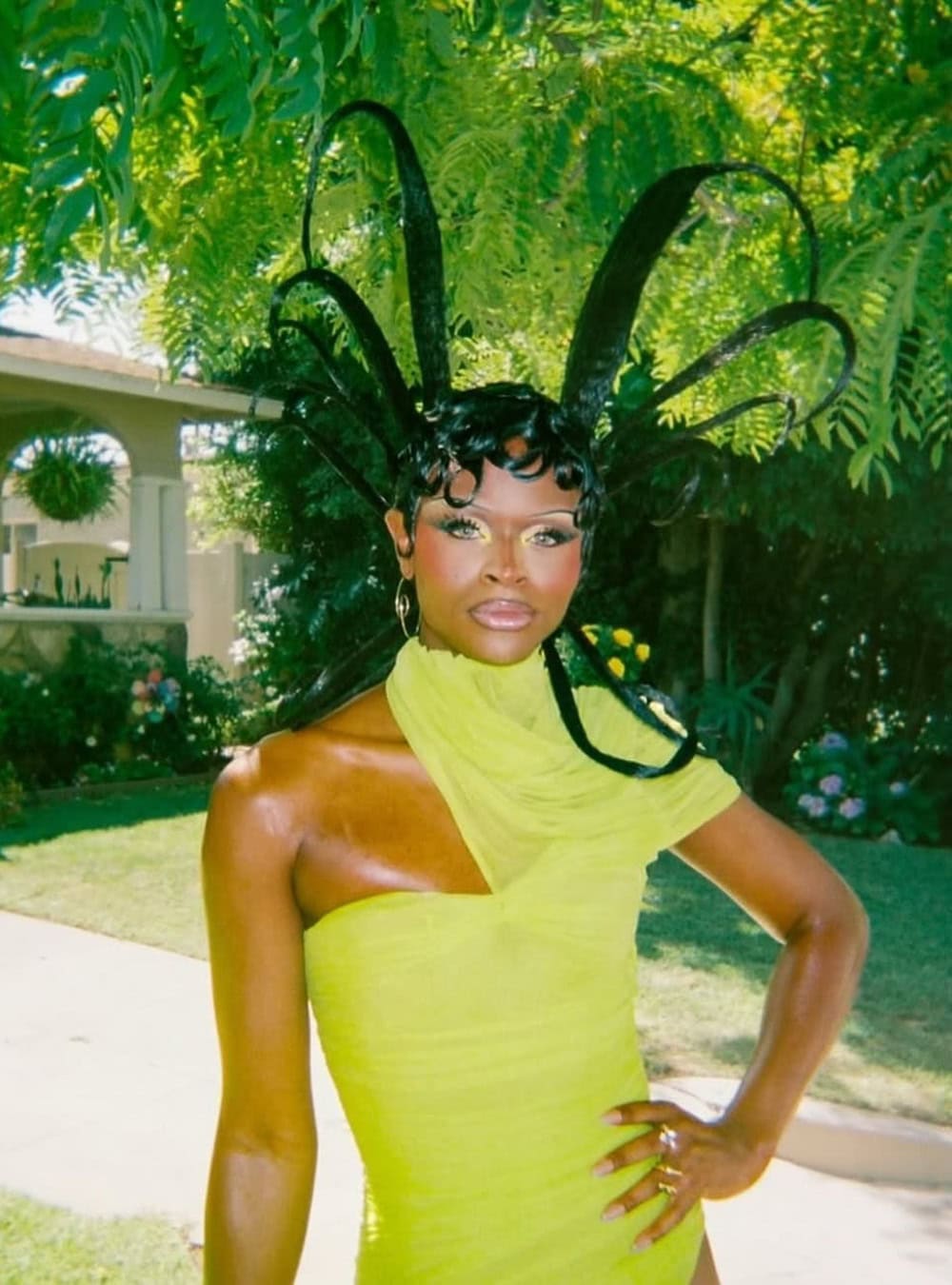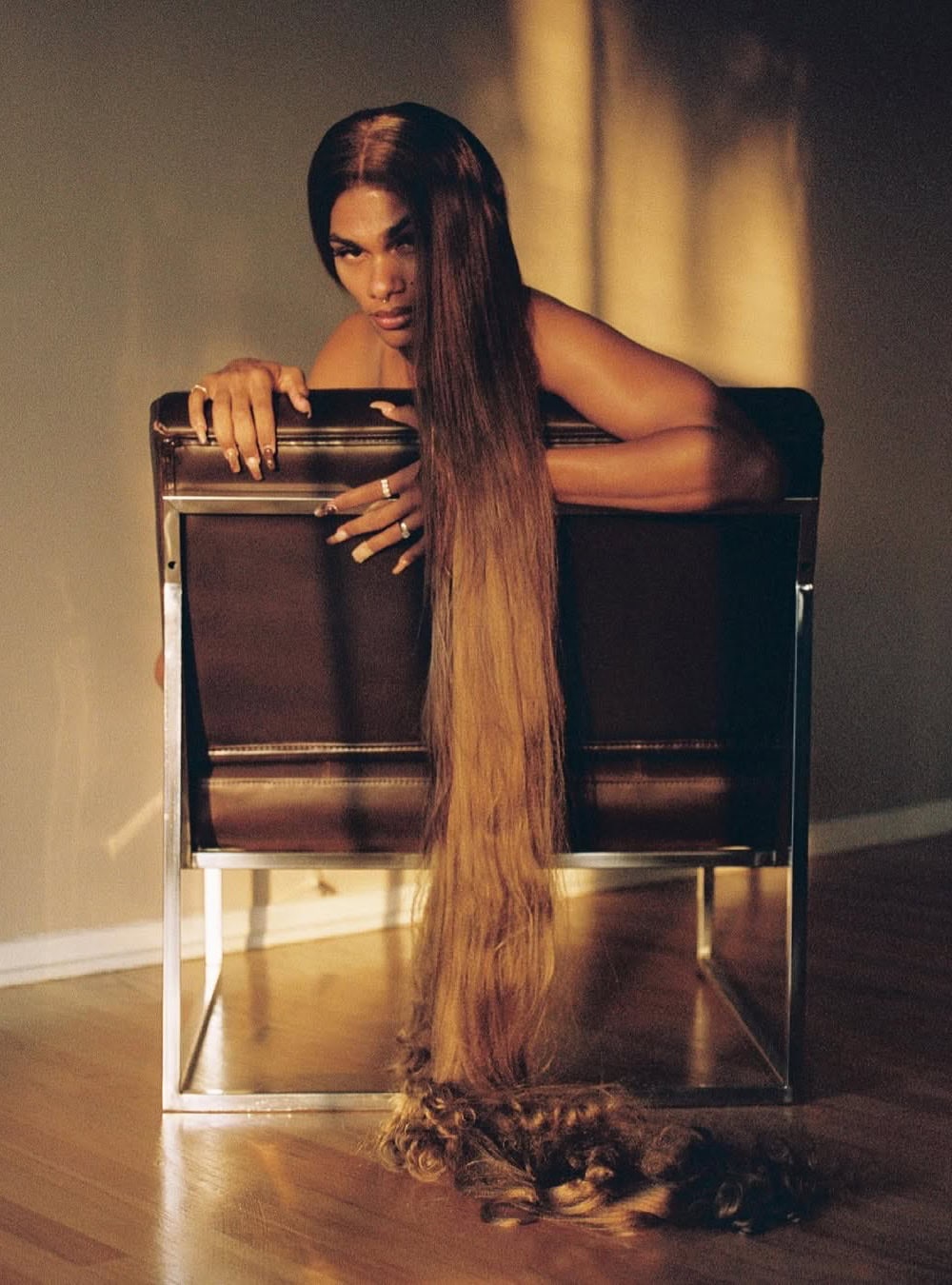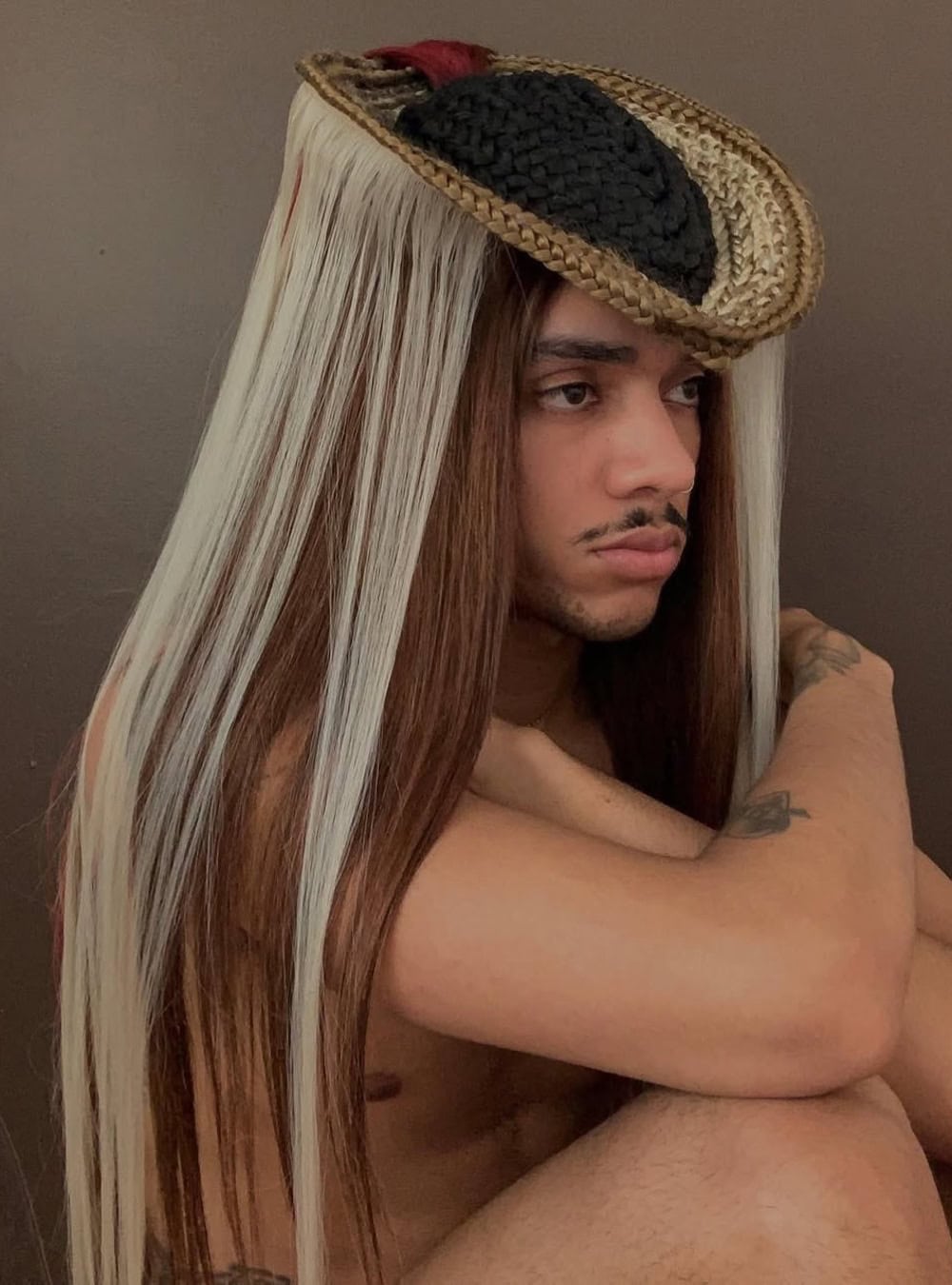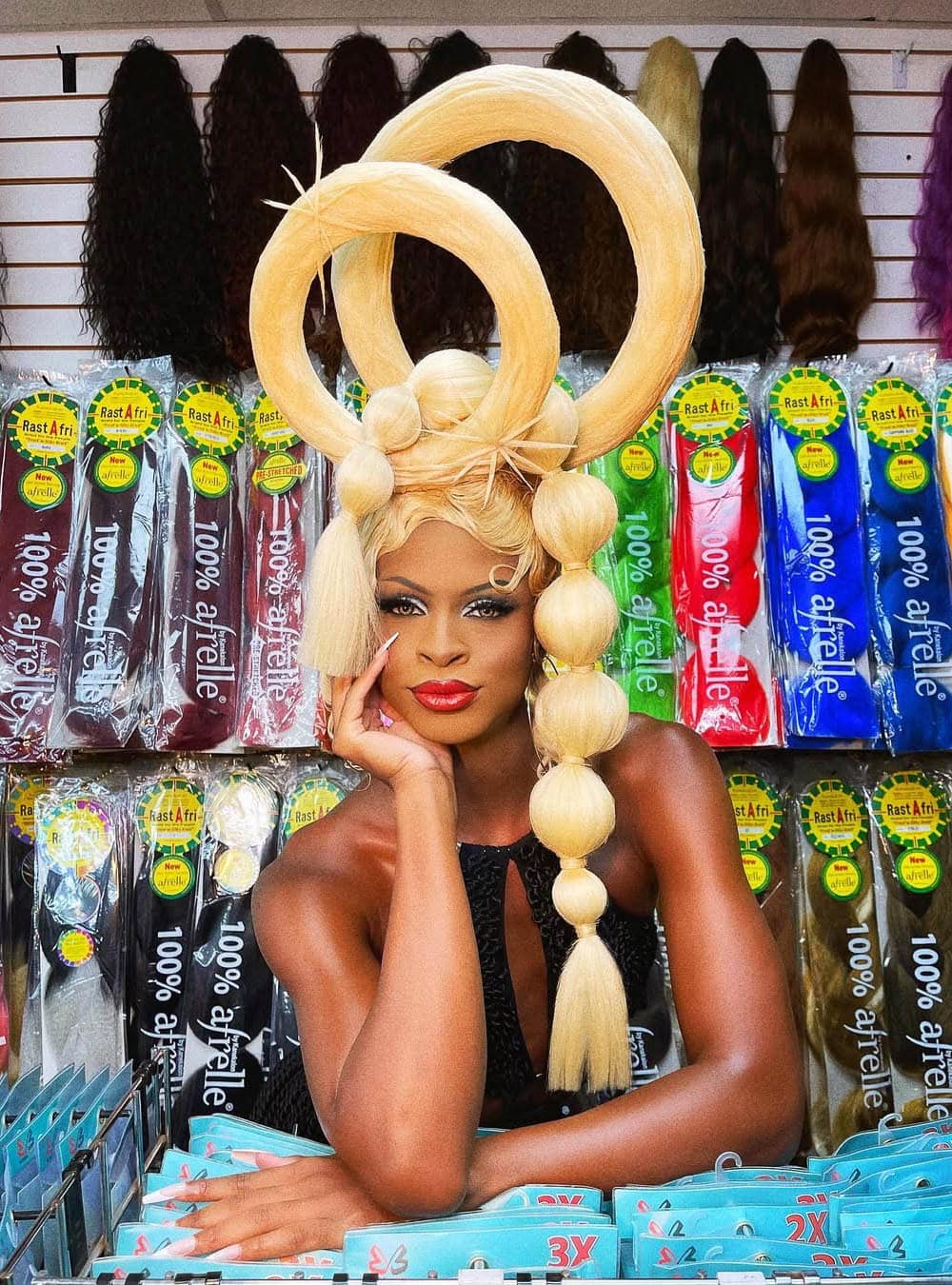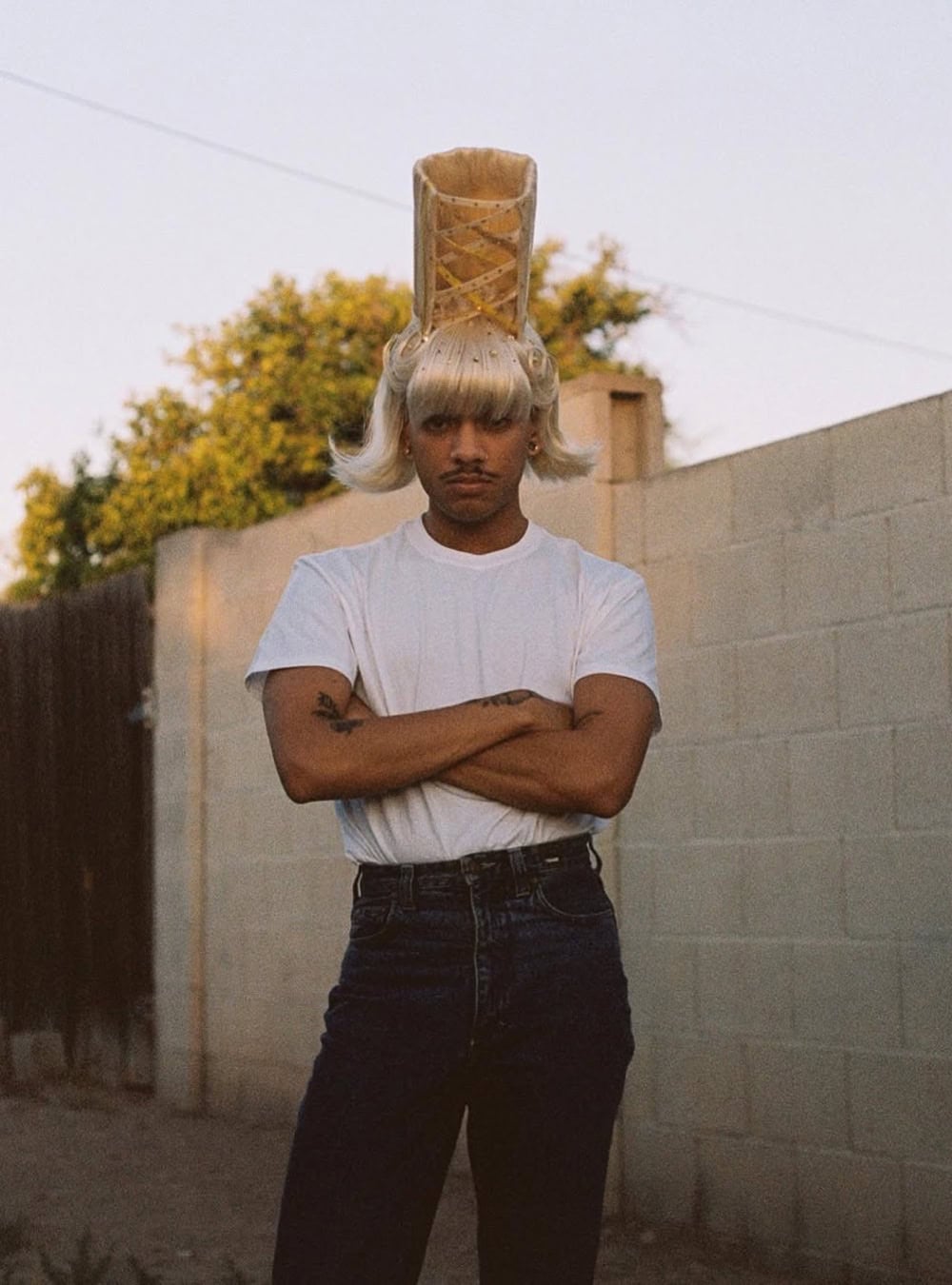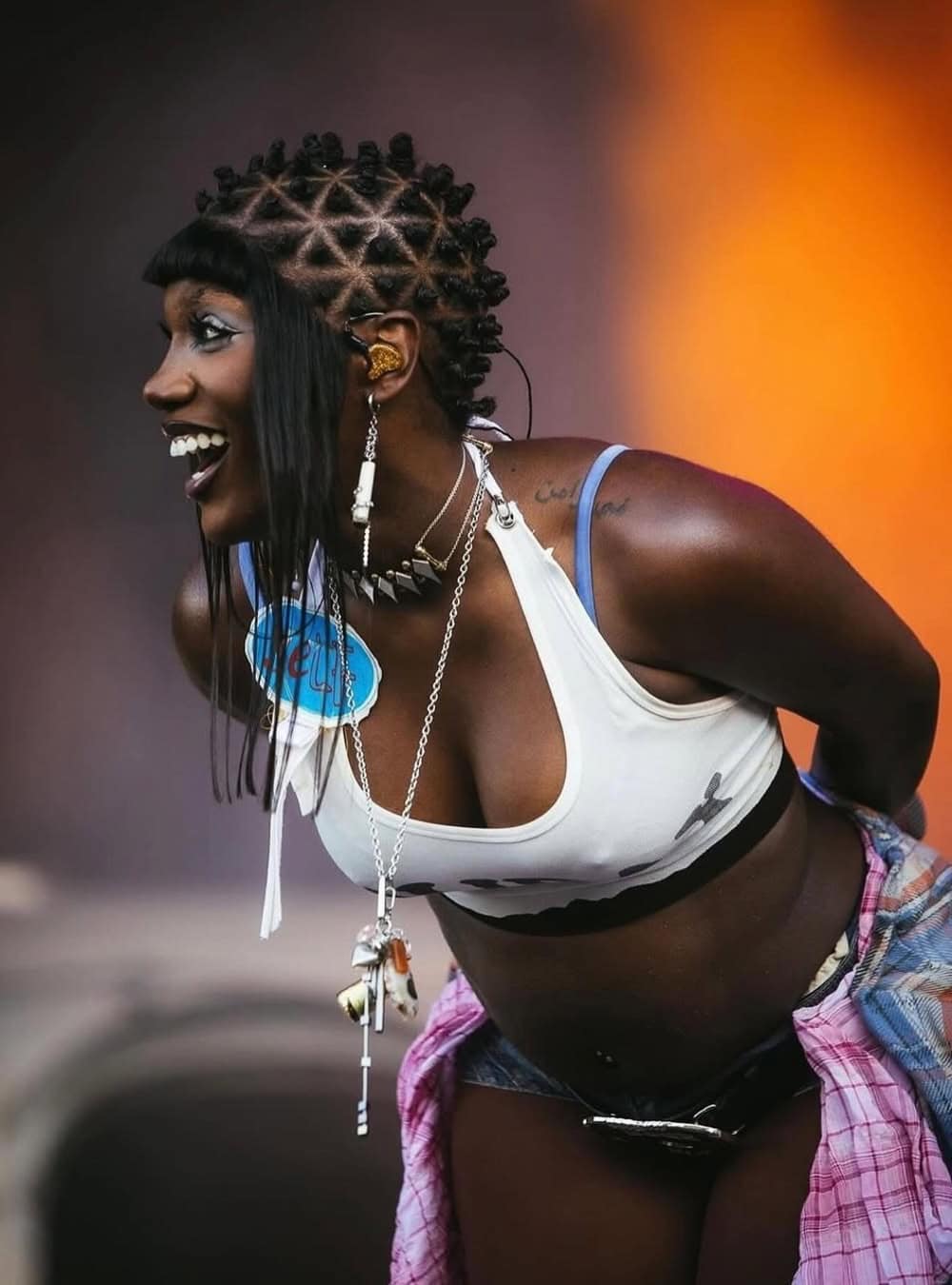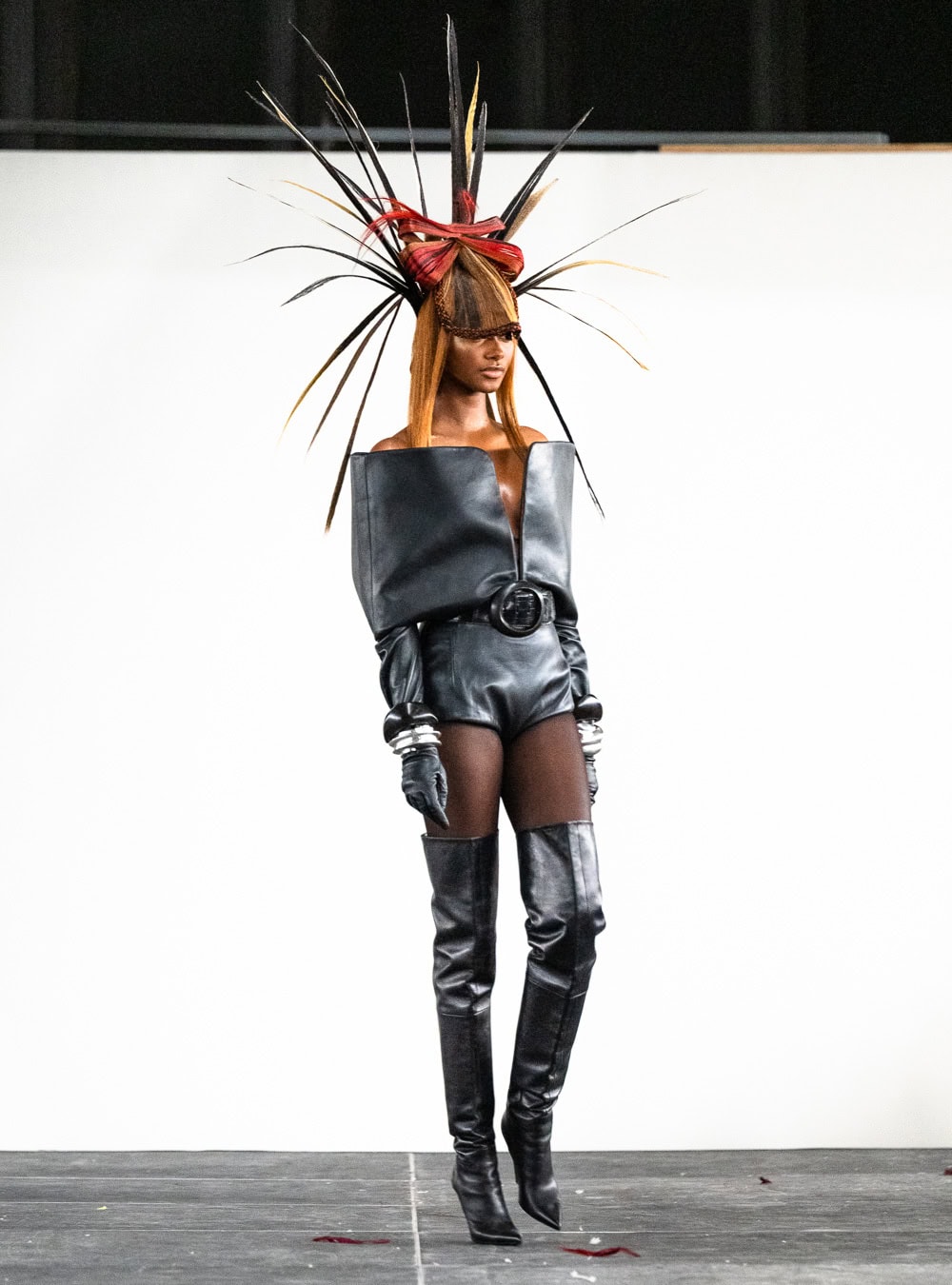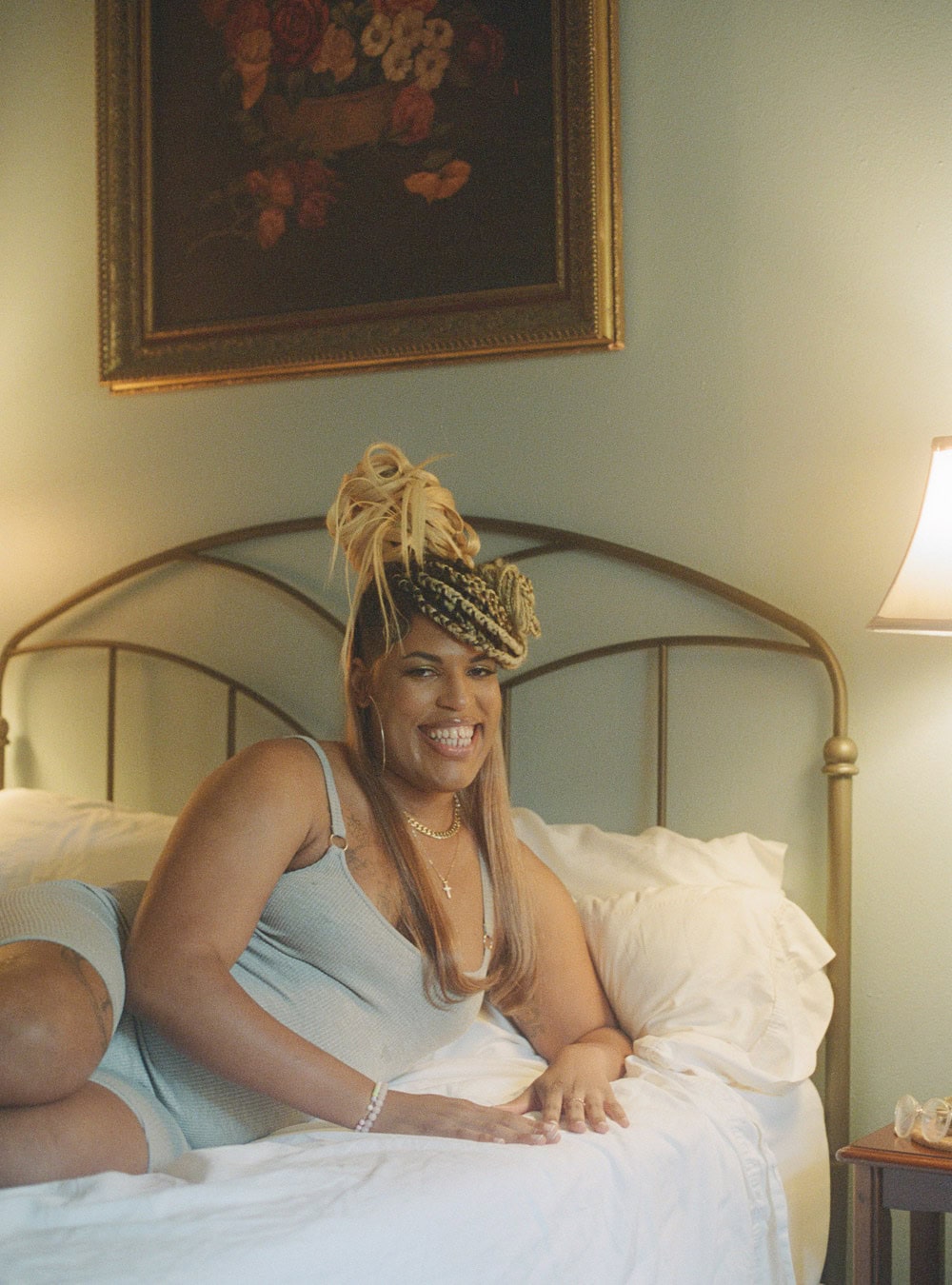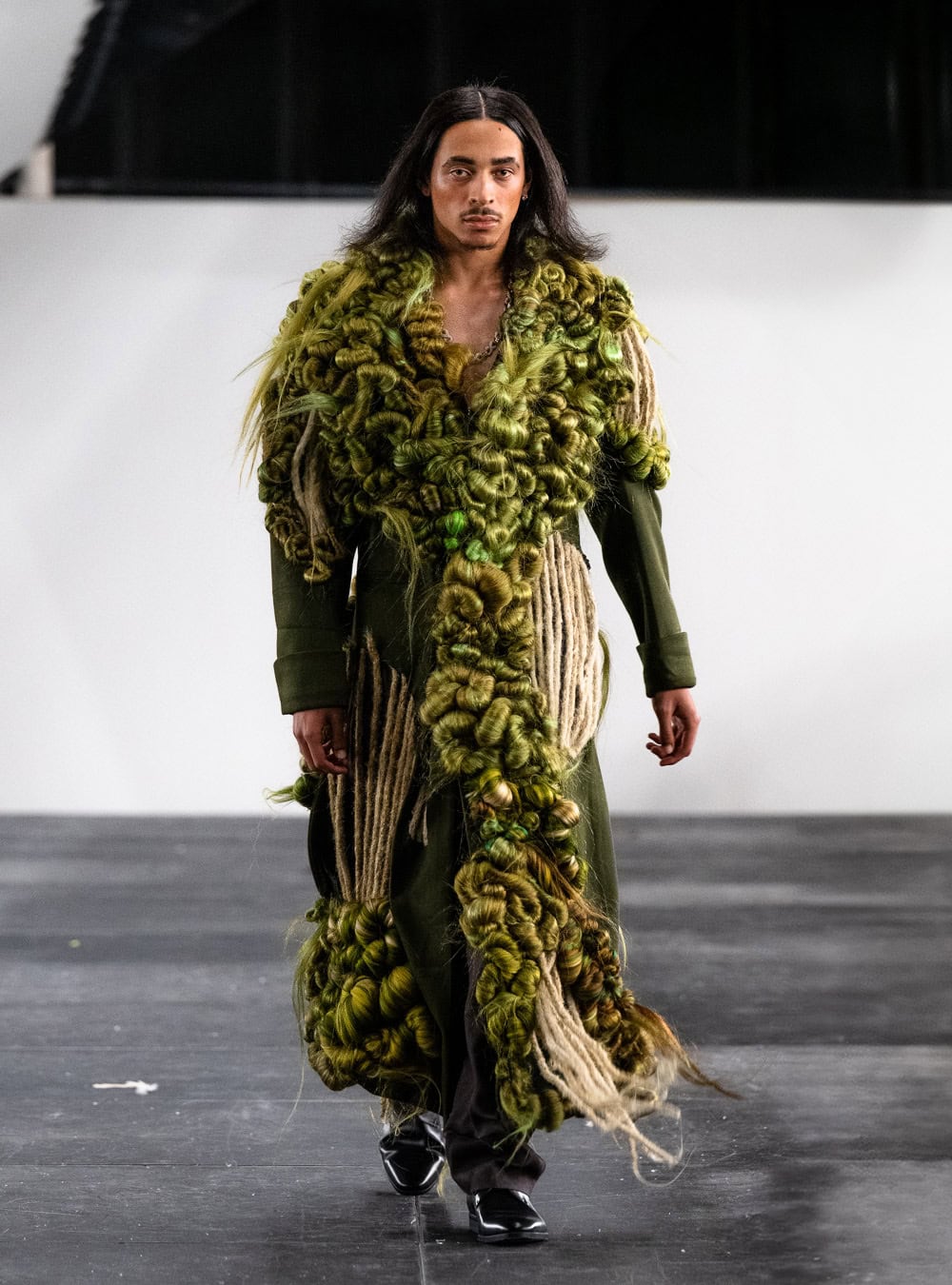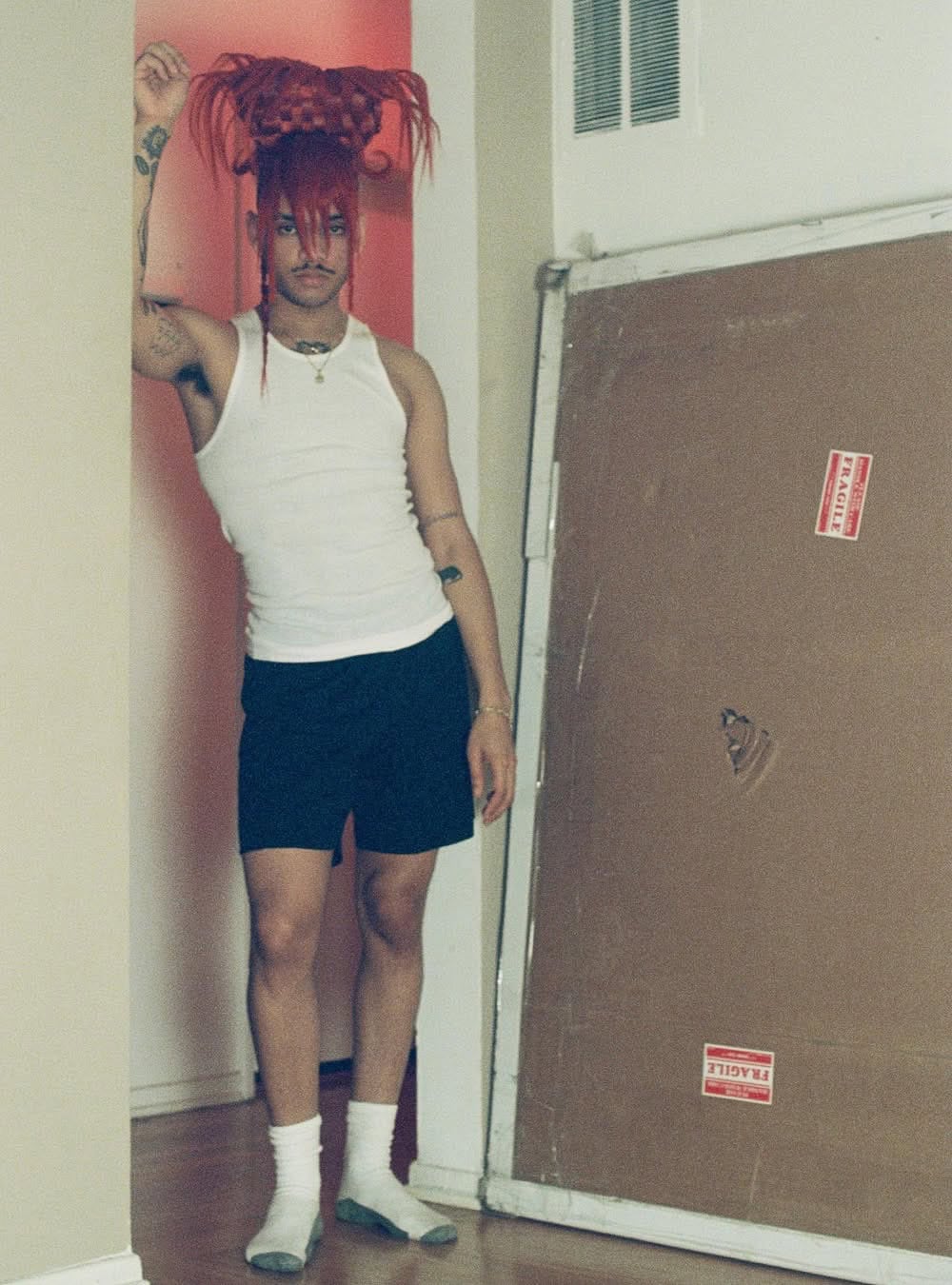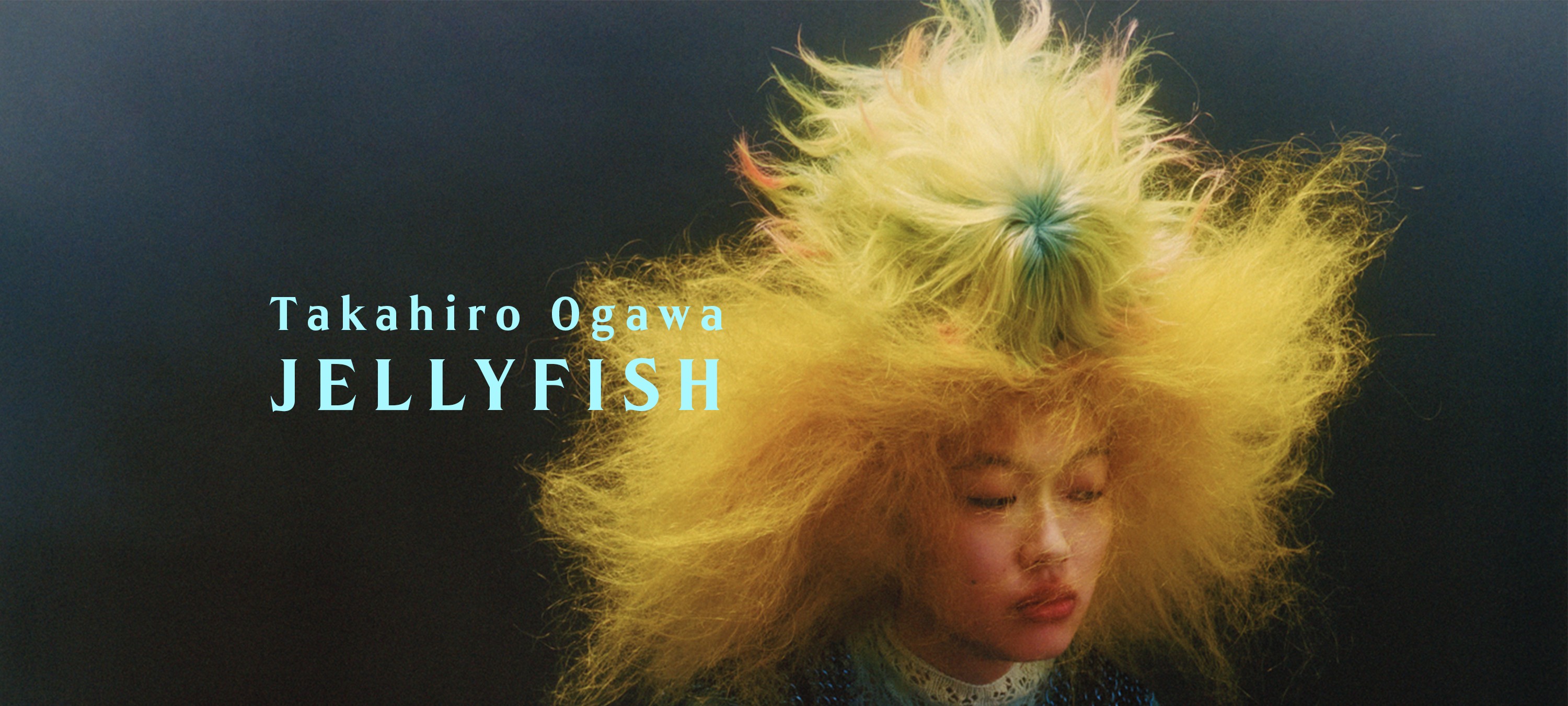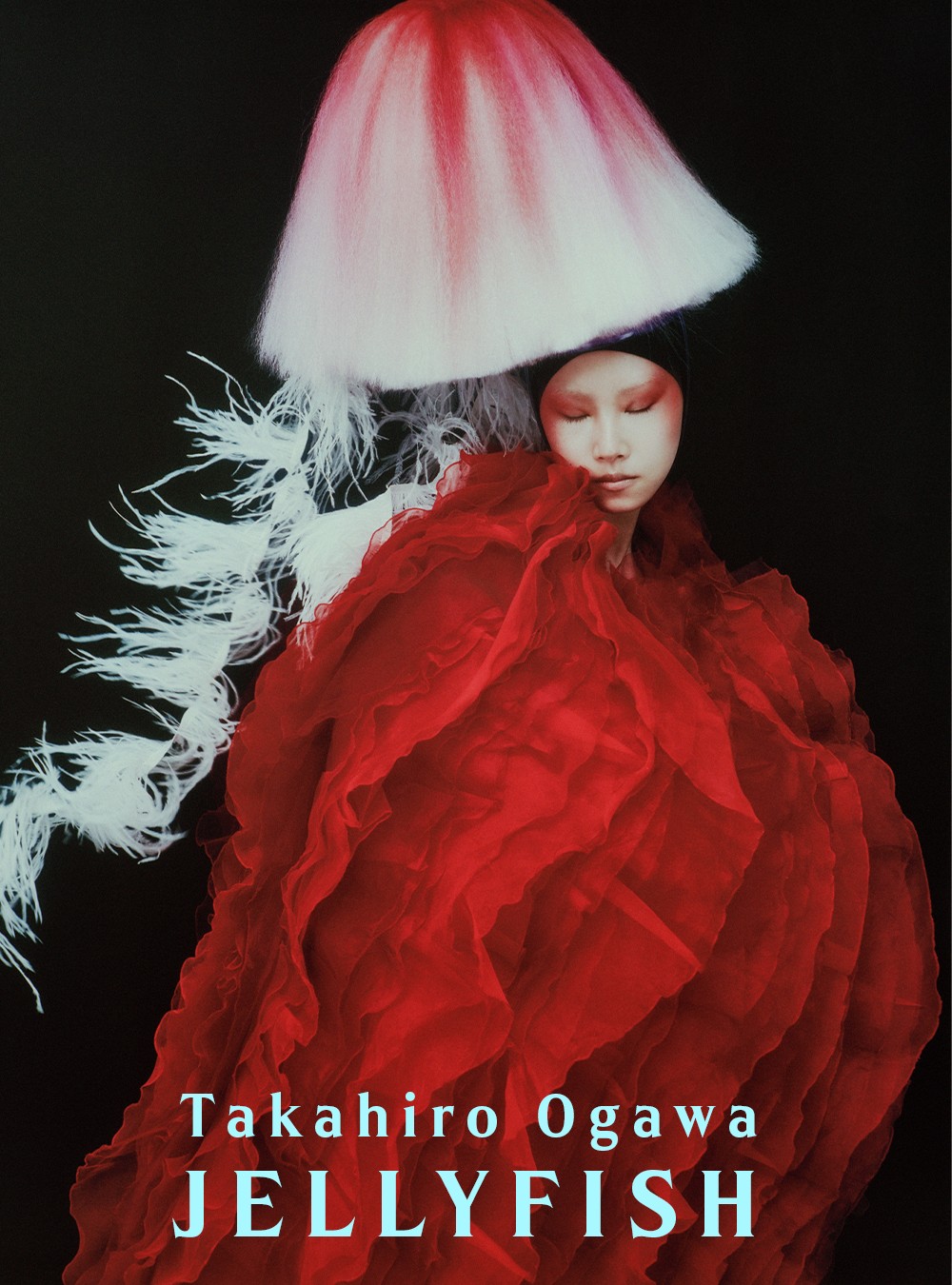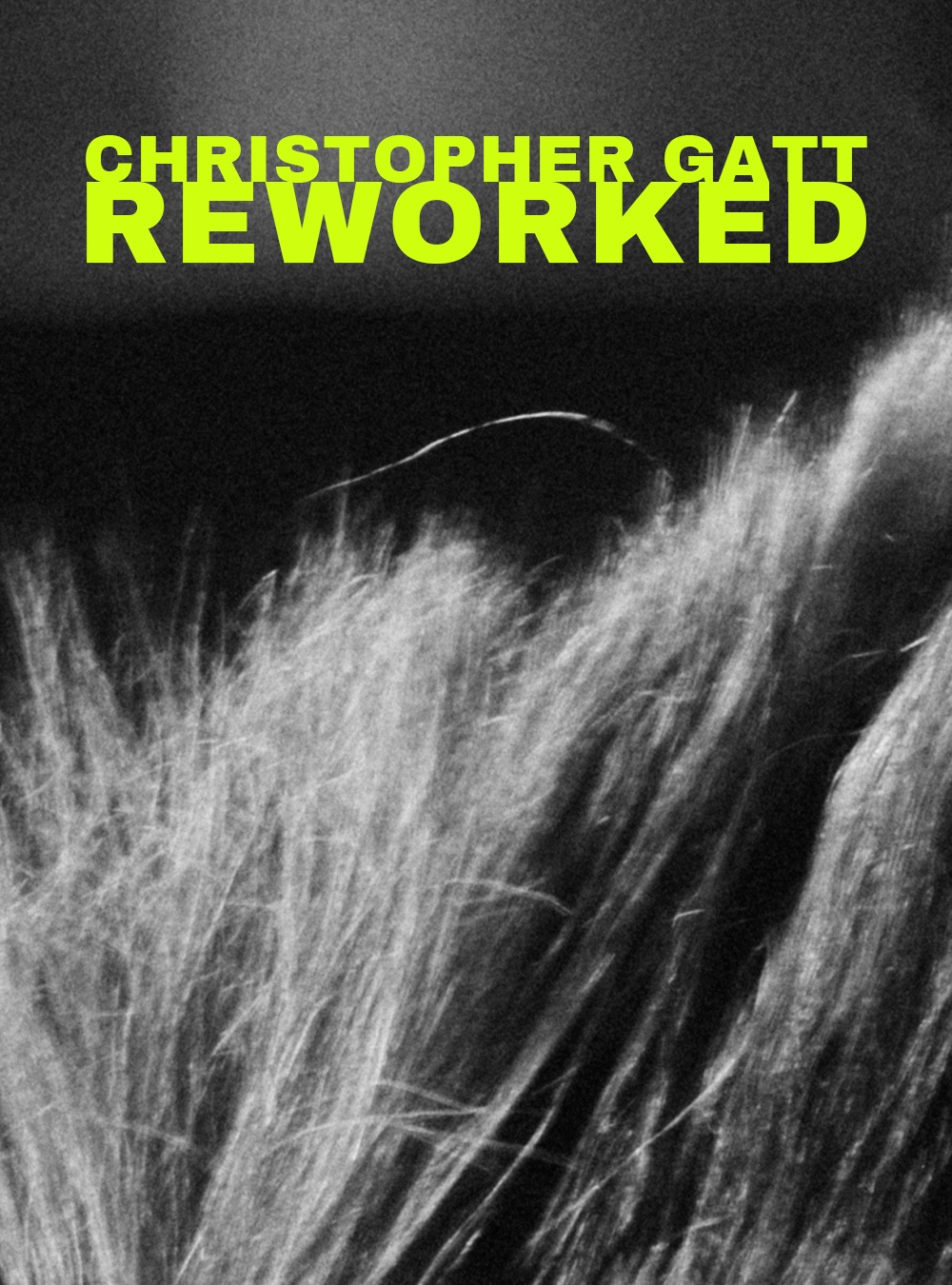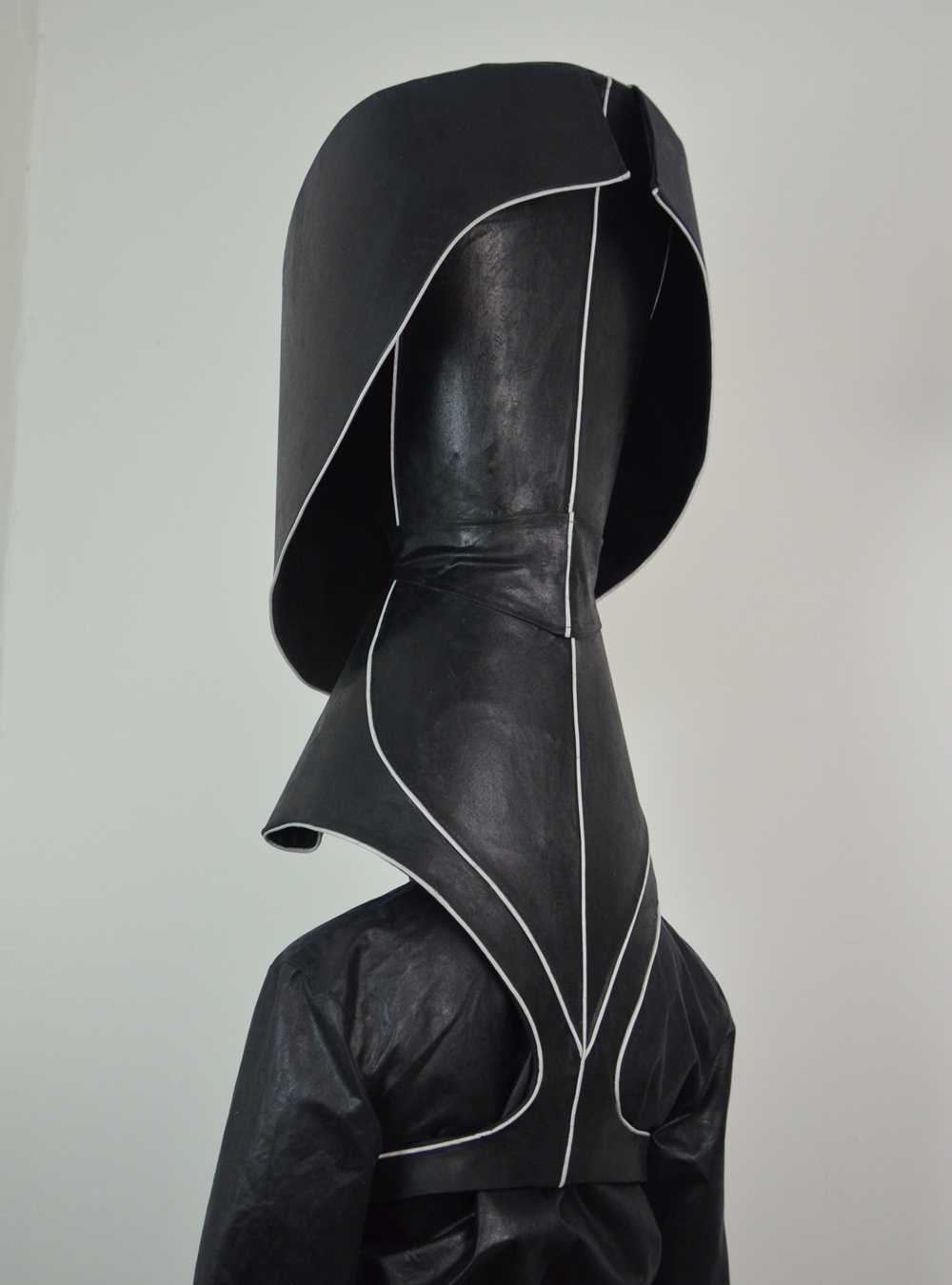PEOPLE: ‘There’s nothing more futuristic than the past’: the wonderful world of Malcolm Marquez
Interview: Hasadri Freeman
Hair: Malcolm Marquez
Images courtesy of Clifford Prince King, Malcolm Marquez, Tasnim Boufelfel, Marko Monroe, + Joshua Sobel
Self-described ‘futurist’ Malcolm Marquez has been waiting for you to get here. The hair artist’s career truly exploded in 2022, into a session career for the likes of Rihanna, Ayo Edebiri, Symone, PinkPantheress, Tyla, and global sensation Doechii (the formerly underground rapper who recently became the third-ever woman to win Best Rap Album at the Grammys, accepting the award adorned with a crown hair-crafted by Marquez). But his work with hair–a medium that the artist says afforded him a liberatory range of storytelling opportunities–began long before that, in an ongoing practice which builds upon queer Black subjectivities and a natural palette perhaps borne of his upbringing in the Arizona desert. ‘What I’m bringing to a project is not just hair but my world,’ he muses with a small smile as we chat about moving into a more confident period of his career. ‘And I think people like it now.’ We talked through his roots, his approach to gender and authenticity in hairstyling, his looks for hip-hop chameleon Doechii, and staying true to oneself as an artist.
I: What got you into hair?
MM: Hair, for me, was the way that I was able to explore and discover my identity. Growing up I had really long hair, and I was very attached to it. As I got older I started playing with my hair a lot, like any typical teenager does. Hair allowed me to transform myself, such that I was able to learn about myself, and liberate myself, in a way. It led me to a place where I found a stronger sense of self through my queerness, through my blackness—I was able to touch so many parts of myself through hair. That eventually I started sharing that feeling with other people around me.I would encourage my friends to do stuff with their hair, I would start doing their hair myself, and one thing led to another—so, something that started more as a therapy for me became my entire life.
I: When you say you had very long hair as a kid—that must have also been unique for a young boy?
MM: Yeah, definitely. I mean, young black boys don’t really have long hair. I grew up in a space where I didn’t have that pressure at home but socially, I knew it was different. But that’s how I felt like myself.
I: Many of your looks continue that thread, where gender and femininity is a playground—I’m thinking of iconic moments like Doechii’s Paper cover, or your recent work for Symone, but also your styling in the past for the No Sesso runway. What role do you feel gender plays when crafting a look, if any?
MM: I do see hair as something that is genderless, and I think that’s also what has attracted me to it. Obviously, there are societal rules of how hair should look on men or women, but in a fashion space, in a creative space, it is a really genderless thing. I think when I’m creating a look with an artist, I’m mainly considering gender when we’re trying to make a statement, because then I’m think about an audience. And women showing up with masculine hairstyles, or things that are not traditionally seen as feminine, does make a statement. So I think about gender mostly when I’m trying to mess with it. But, in other cases, I am also trying to affirm it. A big group of my clientele are trans women, so affirming gender could happen through creating looks that are high-feminine, though that can be done for cisgender women or transgender women. It’s different for everybody, and depends in what space gender is being talked about, whether that’s the fashion space or every day beauty space. Hair is a way that we affirm our gender, or a way that we reject it.
I: When you come to the session space, are you often working to brief, or are you ever given a blank slate?
MM: It depends…I’m definitely never given a blank slate, because I’m one piece of a larger team, but with longer standing clients they’re definitely like what do you want to do, make us some boards—I show them some stuff, they show me what they like, we go back and forth—and that tends to be more of the work that you actually see online. Definitely what I post represents work I believe is the strongest. Other times a team brings me specific references—but I will always give my input.
I: Hair can sometimes struggle to be recognised as the major force for storytelling it is when operating in high fashion spaces, where it’s often seen as secondary to the garments. But you’ve successfully created looks where the hair was the most prominent and eye-catching feature by far. How have you carved out space for your own vision within creative teams?
MM: I have a lot of work where I build a world bigger than just what the hair is, and I feel like I self-represented that for a long time. My work really started getting a lot of visibility in 2019 and 2020 during lockdown, when there was a lot more time to create and people were sitting at home looking at things. But if you look back to a lot of my work preceding that, I have always been the very first model. Before I had celebrity clients, when I’d show people my work it would just be loads of pictures of me! In addition, I was making things like hats and wearable garments—not just more traditional hairstyles. So I feel like that has maybe been a way that I’ve been able to carve out my own space, where what I have built and what I’m bringing to a project is not just hair but my world.
I: I don’t know if you care to make a distinction between fine art and session/editorial, but how do you balance your two creative spaces—one, styling for global talent, and two, showing your work in galleries and collaborating with photographers?
MM: If we go back to the beginning of my hair journey, before I was just focussed on hair I was doing everything. I would make clothes, I would make props, I would make glasses…I have always just been somebody that likes to build things with my hands. Hair was just the medium where I found I could have the most range. So for me, I guess I don’t really separate those spaces very much, because I like to bring fine art into a commercial space, and mix all those worlds together. For example, a version of the hats that I’ve done for years in my personal practice ended up worn by Doechii when she won a Grammy. I just don’t really think about any types of boundaries or rules, or where certain styles or intentions belong. To me it’s about crossing over, bringing things that would be seen in one space into another.
I: Let’s discuss what INFRINGE definitely sees as a collaboration between you and Doechii when it comes to her hair. How did that relationship with her begin and evolve?
MM: We started together in 2022. She had reached out to me for a music video, and I had already been a fan of her work. And the very first thing she wanted me to do was this three-foot wall of hair that sat on her head. And I was like, oh ok, so this girl likes to go crazy, I already know I’m going to like her. I feel like that laid the foundation of her expectation of me but also—she reached out to me already having seen my work and could tell I like to push it, and she’s an artist that also likes to do that. As we have worked together over the years we’ve built a really great relationship where she sends me things, I send her things. There’s a constant back and forth about where we want to go, what we want to do with her hair. And she is one of the artists that I’ve been lucky to work with because I can talk to her about hair in a way that maybe not everyone gets to talk to their clients about. We do talk about the political implications of something, we do talk about gender, we do talk about what hair is adding to the story. We’re both storytellers, but we have different stories and different backgrounds, and that’s what makes our collaboration so great.
I wouldn’t describe the work that I put on her as “Malcolm Marquez,” and I wouldn’t also call it just “Doechii.” It is this place where we kind of meet in the middle. Which is nice, because I never want it to be fully up to me. If it is, you’re going to look crazy and you probably won’t like it. So from the beginning of my career I’ve wanted to address each client—how do we bring something out of you that is authentically you, how do we access this part of who you are through hair? How can I make you feel liberated, and make you feel like yourself and in your skin, confident, but also powerful? I think that’s something that Doechii and I have done together.
With Doechii, a major part was just finding authenticity. We had such a strong glam team, between hair, makeup, and wardrobe, and I think that the team being really synced up helped us build something really authentic to what she wanted to look like. She would talk to us about her ideas, and then trust us as professionals to figure out how to take them even farther while finding something that was authentically her.
I: What has become easier for you since you started doing hair in a professional context, and what has become more difficult?
MM: I think the difficult one is easier to answer: it’s been harder to find time for myself, which I think is really the fuel for my work. Having time to be in the ‘lab,’ as I call it, is a way to stay inspired, to craft new techniques, to practice new things, and where I’m at now it’s harder to find that time. It is something I’m consciously working on trying to make more of.
And what has become easier? That’s hard to answer—it feels like not much. I think I’m just more confident, and that helps a lot. There’s the time when you’re faking your confidence, and then when you actually have it. And I think I’m starting to reach the middle point. I also am just really excited with the visibility that my work is getting now. I’ve never doubted my work, but sometimes I’m not confident that it will be received the way that I want it to, and I feel like I’m at a point now where people are starting to really see and understand it.
Even being able to talk to you, and being able to talk to other people who I feel can see themes and appreciate the unconventional-ness of something, like oh my gosh, they get it, they’re finally starting to get it! It makes me more comfortable going into projects or sitting down with artists and being able to show through my work, show that I kind of know what I’m talking about and that I can help you achieve whatever you want to do.
I: Confidence is such a huge one. But it seems driven not you becoming more legible, but others people catching up?
MM: That’s truly how I feel about a lot of things in my life. But also, I’m not surprised that it took a while to catch up. Because I feel like I was already ahead of myself…I would describe myself as a futurist. I really try to look forward and—I’m going a little off topic here, but I find that there’s nothing more futuristic than the past. And when I say the past, I mean ancient civilisation, not like, the 1960s. It’s a big reference point for me.
I: There’s something there about the spiritual relationship that people in ancient civilisations had with the practices of adornment.
MM: And with ancient civilisations, it was people living in their natural worlds—it’s not giving houses and electricity, it’s giving people living off the land. And a lot of my work is inspired by nature and natural elements. I grew up in Arizona. That’s another thing that really inspires my work, I’m a desert kid. I tend to work within a very earth toned colour palette, too.
I: In terms of the industry, where do you feel like its creative future lies?
MM: I think there’s a lot more space than there used to be. I think I’m seeing a lot more space for artists to be who they are and not have to confine themselves to the rules of the old school hair industry. I see a lot more people having their niche thing. And also not always living in the big city. I get really excited to find creatives and artist who aren’t in Paris for Fashion Week, they’re just in a studio making art out of hair that they sell online, or collaborating with bigger entities long-distance. I feel like there’s just more opportunity, and more space for people to be themselves.
I: Any last hot takes or things you’ve been dying to say about hair?
MM: Well, to me they’re not hot.
I: ‘Futurist’ takes, maybe?
MM: Break the rules. There’s so many people that inspire me, but I think I learned early on that I’m not going to get anywhere by trying to mimic somebody else’s journey. I think a really common question posed to anyone who has gained even a crumb of success is well, how did you get here? But trying to do it the way somebody else did it is never going to work. There’s nothing to follow: do what you want, carve your own path, and eventually that will catch on and people will pay attention to it—but also, if your goal is to get attention, maybe you shouldn’t do what you do. Maybe that’s my hot take? If outside affirmation is what you need to feel affirmed in your practice, you might need to rethink the angle that you’re practicing from. But if you are yourself and you find something that’s healing to you, and you can offer the world whatever piece of art is the product of that healing? Then that’s what you should offer. That’s what you should bring forth.
- ANTHROPOLOGY OF HAIR
- ANTHROPOLOGY OF HAIR
- ANTHROPOLOGY OF HAIR
- ANTHROPOLOGY OF HAIR
- ANTHROPOLOGY OF HAIR
